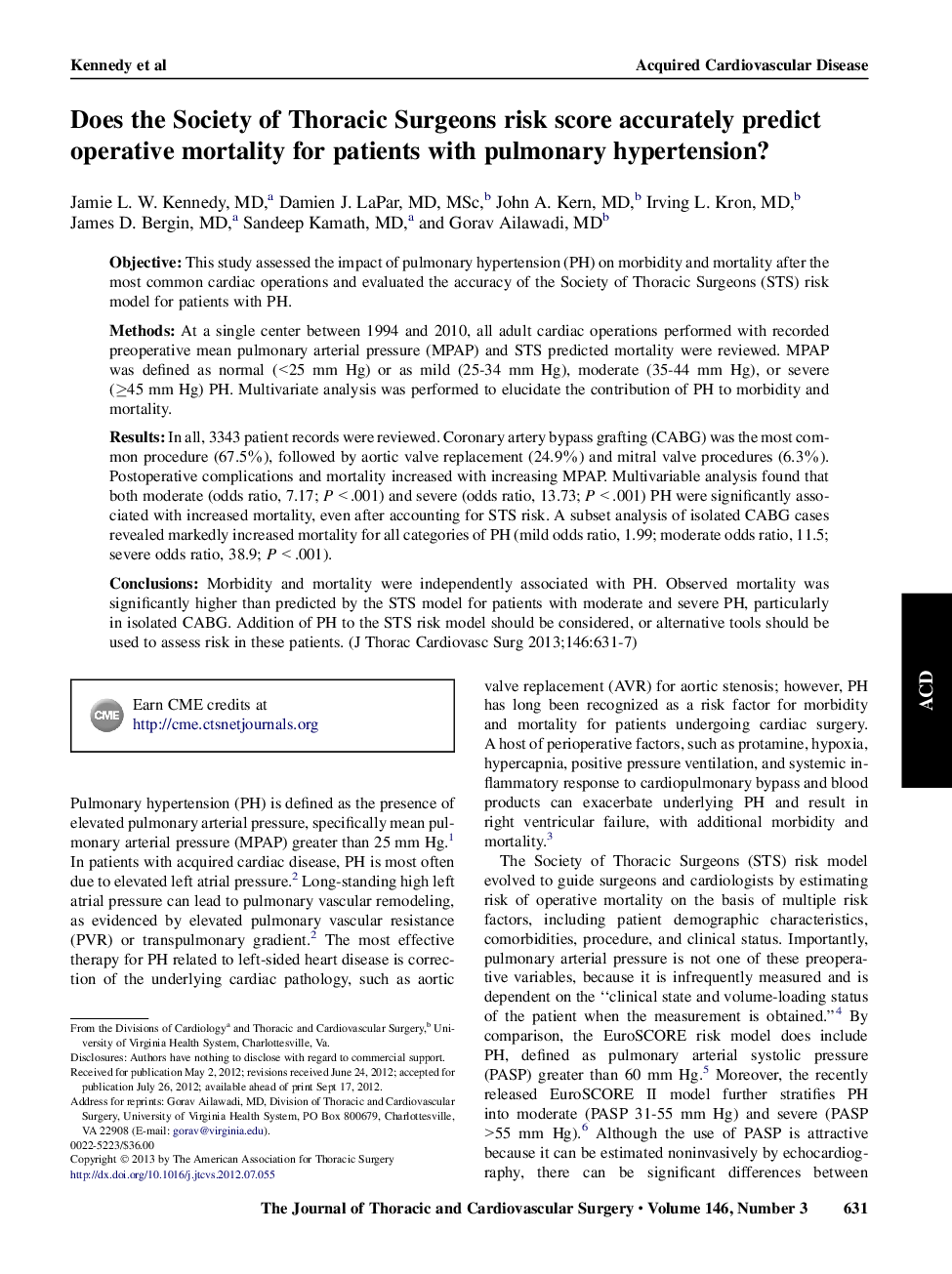| Article ID | Journal | Published Year | Pages | File Type |
|---|---|---|---|---|
| 5990135 | The Journal of Thoracic and Cardiovascular Surgery | 2013 | 7 Pages |
ObjectiveThis study assessed the impact of pulmonary hypertension (PH) on morbidity and mortality after the most common cardiac operations and evaluated the accuracy of the Society of Thoracic Surgeons (STS) risk model for patients with PH.MethodsAt a single center between 1994 and 2010, all adult cardiac operations performed with recorded preoperative mean pulmonary arterial pressure (MPAP) and STS predicted mortality were reviewed. MPAP was defined as normal (<25 mm Hg) or as mild (25-34 mm Hg), moderate (35-44 mm Hg), or severe (â¥45 mm Hg) PH. Multivariate analysis was performed to elucidate the contribution of PH to morbidity and mortality.ResultsIn all, 3343 patient records were reviewed. Coronary artery bypass grafting (CABG) was the most common procedure (67.5%), followed by aortic valve replacement (24.9%) and mitral valve procedures (6.3%). Postoperative complications and mortality increased with increasing MPAP. Multivariable analysis found that both moderate (odds ratio, 7.17; P < .001) and severe (odds ratio, 13.73; P < .001) PH were significantly associated with increased mortality, even after accounting for STS risk. A subset analysis of isolated CABG cases revealed markedly increased mortality for all categories of PH (mild odds ratio, 1.99; moderate odds ratio, 11.5; severe odds ratio, 38.9; P < .001).ConclusionsMorbidity and mortality were independently associated with PH. Observed mortality was significantly higher than predicted by the STS model for patients with moderate and severe PH, particularly in isolated CABG. Addition of PH to the STS risk model should be considered, or alternative tools should be used to assess risk in these patients.
